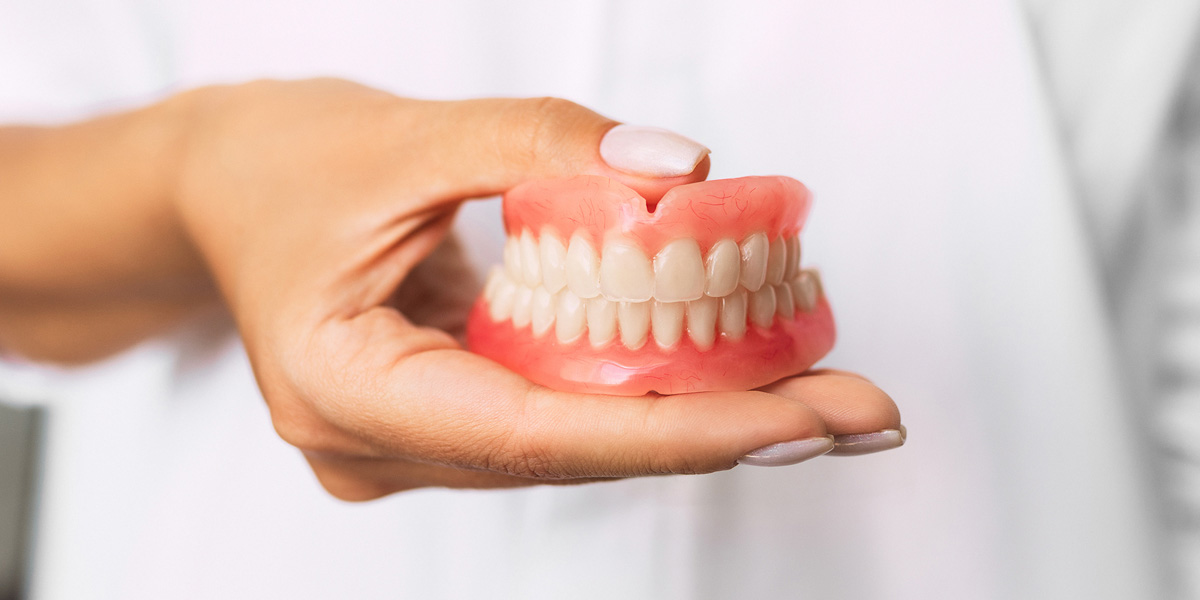Removable dentures (sometimes referred to as "false teeth" or "plates") are a common treatment alternative for the condition known as "edentulism" (i.e. missing teeth). They are versatile in their ability to replace any number of missing teeth and to fill out the contours of the face and lips, which shrink inward when multiple teeth are lost. Typically the denture base is made of acrylic plastic that can be tinted to match the patient's natural gum tissues. The teeth are made from either acrylic or ceramic.
The upper left photograph shows the side of the denture that is worn against the patient's gums, where their teeth used to be. Note that the denture base (the pink part that holds the teeth and rests on the gum tissues) covers the roof of the mouth (palate), and adds bulk on the side towards the lips and cheeks to give the face proper contours. The lower right photograph shows how the denture will function with the patient's lower denture. Ideally, upper and lower dentures are made in sets for completely edentulous patients. This provides the best chewing efficiency and esthetics.
Complete dentures are an option for the completely edentulous patient, while partial dentures (often called "partials") are an option for the partially edentulous. Partial dentures are held in place in the mouth by wire clasps and/or other means of attachment to the remaining natural teeth. Partial dentures can be a temporary means of treating patients who are expecting to lose the remaining teeth. As more teeth are lost, they can be added to the partial. At some point, as the natural teeth being used to anchor the partial denture (abutments) are lost, it becomes necessary to completely remake the denture, or explore other treatment options, like fixed bridgework or dental implants—both of which are usually good solutions for the replacement of single teeth as well.
Complete dentures are held in place by some combination of "suction cup effect", denture adhesive (best if used very minimally), and the patient's controlled use of their tongue and facial muscles. Learning to function with complete dentures can be a challenge, as with any prosthetic device. Dental implants can also be used to help stabilize dentures, and often significantly improve a patient's quality of life.
Note that the denture replaces all but three of the patient's natural teeth, which will be used to retain the denture in place in the mouth. This denture has a "swing lock" clasping feature, consisting of a hinged bar, shown in the open position. The swing lock will not be visible behind the patient's lower lip when the denture is placed in the mouth. The ability to remove the denture makes it much easier to clean such retention features. Not evident from the photograph is that the metal framework which serves as the denture's skeleton extends under the pink plastic gum "tissue" and denture teeth to strengthen them. Generally the framework is made of an extremely hard nickel-chrome alloy; however, for those with nickel allergies, other materials can be used.

